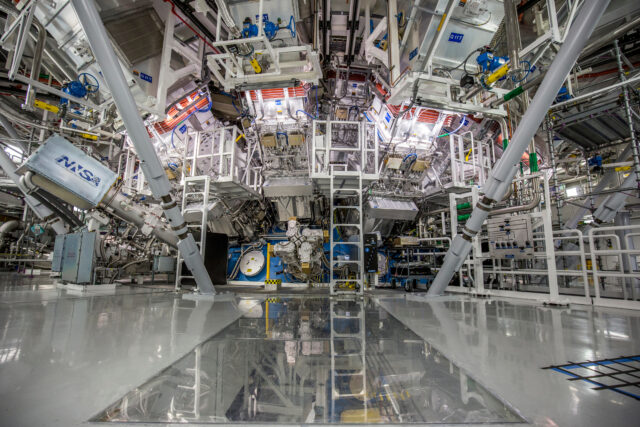
US Department of Energy Confirms ‘Landmark’ Nuclear Fusion Reaction
Researchers at the Lawrence Livermore National Laboratory (LLNL) National Ignition Facility reportedly pulled off the reaction on Monday, Dec. 5. Using a laser array the size of a sports stadium, LLNL mimicked the temperatures and pressures found within stars, where nuclear fusion occurs naturally.
US Energy Secretary Jennifer Granholm at the announcement of LLNL’s nuclear fusion achievement. (Credit: Lawrence Livermore National Laboratory)
“Ignition allows us to replicate for the first time certain conditions that are only found in the stars and sun,” said US Energy Secretary Jennifer Granholm during Tuesday’s . “This milestone moves us one significant step closer to the possibility of zero-carbon abundant fusion energy powering our society.”
Legislators and clean energy experts alike have the Department of Energy in celebrating what’s likely a major step toward a “cleaner” energy grid. But despite everyone’s (well-founded) excitement, it’ll be quite some time before fusion reactions like this one will power everyday infrastructure. LLNL director Kim Budil emphasized that there are still “significant hurdles” to overcome in regards to nuclear fusion technology before it can be used on a large scale—or any scale, for that matter. Such progress could take years, or even a few more decades.

The target chamber of LLNL’s National Ignition Facility. (Credit: Lawrence Livermore National Laboratory
National Nuclear Security Administration (NNSA) administrator Jill Hruby tacked onto Budil’s prudence by warning that there will be a series of “breakthroughs” and “setbacks” in the development of nuclear fusion technology going forward. Though LLNL’s achievement is significant, it will take continued experimentation and learning to build upon this “engineering marvel.”
LLNL its ignition success will directly support NNSA’s Stockpile Stewardship Program, which focuses on the safety and reliability of the United States’ nuclear equipment. It will also provide priceless insights for ongoing clean energy research.
Now Read: